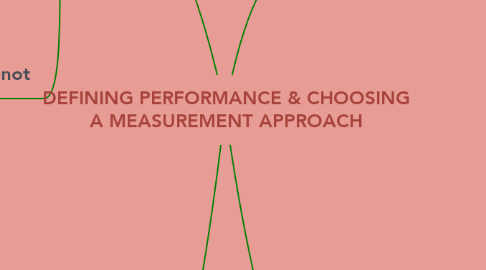
1. DEFINING PERFORMANCE
1.1. Performance is
1.1.1. Behavior
1.1.1.1. Evaluative
1.1.1.1.1. Negative
1.1.1.1.2. Neutral
1.1.1.1.3. Positive
1.1.1.2. Multidimensional
1.1.1.2.1. Many different kinds of behaviors
1.1.1.2.2. Advance or hinder organizational goals
1.1.1.3. Not always
1.1.1.3.1. Observable
1.1.1.3.2. Measurable
1.1.2. What employees do
1.2. Performance is not
1.2.1. Results or Outcomes
1.2.1.1. To infer behavior
1.2.1.2. As proxy for behavioral measure
1.2.2. What employees produce
2. DETERMINANTS OF PERFORMANCE
2.1. Factors Determining Performance
2.1.1. Declarative Knowledge
2.1.1.1. Facts
2.1.1.2. Principles
2.1.1.3. Goals
2.1.2. Procedural Knowledge
2.1.2.1. Cognitive skill
2.1.2.2. Psychomotor skill
2.1.2.3. Physical skill
2.1.2.4. Interpersonal skill
2.1.3. Motivation
2.1.3.1. Choice to perform
2.1.3.2. Level of effort
2.1.3.3. Persistence of effort
2.2. Implications for Addressing Performance Problems
2.2.1. Managers need information to accurately identify source(s) of performance problems
2.2.2. Performance management systems must - Measure performance - Provide information on SOURCE(s) of problems
2.3. Factors Influencing Determinants of Performance
2.3.1. Individual characteristics
2.3.2. HR practices
2.3.3. Work environment
3. PERFORMANCE DIMENSIONS
3.1. Task Performance
3.1.1. Varies across jobs
3.1.2. Likely to be role prescribed
3.1.3. Antecedents: abilities & skills
3.2. Contextual Performance
3.2.1. Fairy similar across jobs
3.2.2. Not likely to be role prescribed
3.2.3. Antecedent: personality
4. APPROACHES TO MEASURING PERFORMANCE
4.1. Behavior Approach
4.1.1. The link between behaviors and results is not obvious
4.1.2. Outcomes occur in the distant future
4.1.3. Poor results are due to cause beyond the employee's control
4.2. Results Approach
4.2.1. Workers are skilled in the needed behavior
4.2.2. Behaviors and results are obviously related
4.2.3. Results show consistent improvement over time
4.2.4. There are many ways to do the job right
4.3. Trait Approach
4.3.1. Emphasis on individual
4.3.1.1. Evaluate stable traits
4.3.1.2. Base on relationship between traits & performance
4.3.2. Appropriate if structural changes planned for organization
4.3.3. Disadvantages
4.3.3.1. Improvement not under individual's control
4.3.3.2. Trait may not lead to
4.3.3.2.1. Desired behaviors
4.3.3.2.2. Desired results

